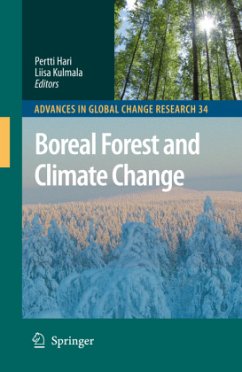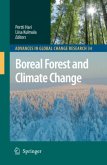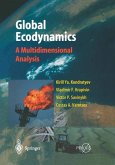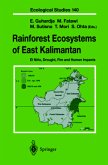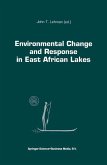The authors of this book about the interplay between vegetation and climate change come from very different disciplines. However, their shared vision has resulted in coherent research that crosses the disciplinary boundaries and has produced a unique data set.
The Forest Primary Production Research Group was born in the Department of S- viculture, University of Helsinki in the early 1970s. Intensive ?eld measurements of photosynthesis and growth of forest vegetation and use of dynamic models in the interpretation of the results were characteristic of the research in the group. Electric instrumentation was based on analogue techniques and the analysis of the obtained measurements was based on self-written programs. Joint research projects with the Research Group of Environmental Physics at the Department of Physics, lead by Taisto Raunemaa (1939-2006) started in the late 1970s. The two research groups shared the same quantitative methodology, which made the co-operation fruitful. Since 1980 until the collapse of the Soviet Union the Academy of Finland and the Soviet Academy of Sciences had a co-operation program which included our team. The research groups in Tartu, Estonia, lead by Juhan Ross (1925-2002) and in Petrozawodsk, lead by Leo Kaipiainen (1932-2004) were involved on the Soviet side. We had annual ?eld measuring campaigns in Finland and in Soviet Union and research seminars. The main emphasis was on developing forest growth models. The research of Chernobyl fallout started a new era in the co-operation between forest ecologists and physicists in Helsinki. The importance of material ?uxes was realized and introduced explicitly in the theoretical thinking and measurements.
The Forest Primary Production Research Group was born in the Department of S- viculture, University of Helsinki in the early 1970s. Intensive ?eld measurements of photosynthesis and growth of forest vegetation and use of dynamic models in the interpretation of the results were characteristic of the research in the group. Electric instrumentation was based on analogue techniques and the analysis of the obtained measurements was based on self-written programs. Joint research projects with the Research Group of Environmental Physics at the Department of Physics, lead by Taisto Raunemaa (1939-2006) started in the late 1970s. The two research groups shared the same quantitative methodology, which made the co-operation fruitful. Since 1980 until the collapse of the Soviet Union the Academy of Finland and the Soviet Academy of Sciences had a co-operation program which included our team. The research groups in Tartu, Estonia, lead by Juhan Ross (1925-2002) and in Petrozawodsk, lead by Leo Kaipiainen (1932-2004) were involved on the Soviet side. We had annual ?eld measuring campaigns in Finland and in Soviet Union and research seminars. The main emphasis was on developing forest growth models. The research of Chernobyl fallout started a new era in the co-operation between forest ecologists and physicists in Helsinki. The importance of material ?uxes was realized and introduced explicitly in the theoretical thinking and measurements.
From the reviews:
"Boreal forest and climate change is a much-needed addition to the literature on the subject. ... the book provides detailed, nicely illustrated insights into both conceptual and mechanistic process models describing aspects of these theories and associated processes, their interactions, and scale dependence. ... the book is most appropriate as a high-level scientific treatise for those with a keen interest in the biophysical aspects of measuring and modeling ecosystem-atmosphere exchange. ... this book is a veritable treasure trove of information on the subject." (Scott Goetz, Ecology, Vol. 80 (7), 2009)
"Boreal forest and climate change is a much-needed addition to the literature on the subject. ... the book provides detailed, nicely illustrated insights into both conceptual and mechanistic process models describing aspects of these theories and associated processes, their interactions, and scale dependence. ... the book is most appropriate as a high-level scientific treatise for those with a keen interest in the biophysical aspects of measuring and modeling ecosystem-atmosphere exchange. ... this book is a veritable treasure trove of information on the subject." (Scott Goetz, Ecology, Vol. 80 (7), 2009)

